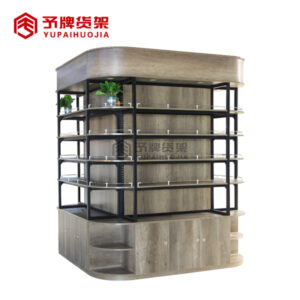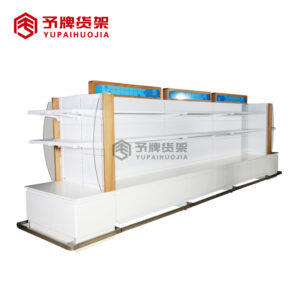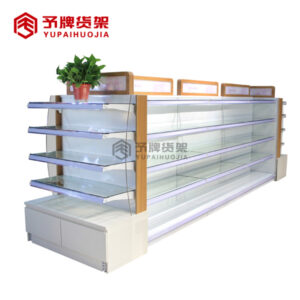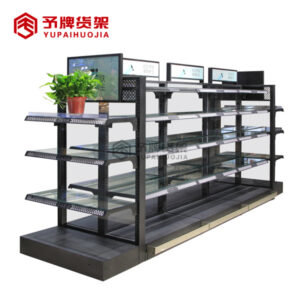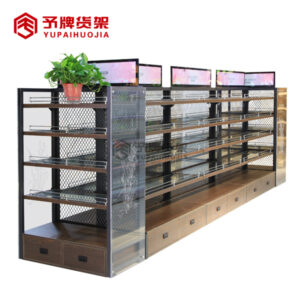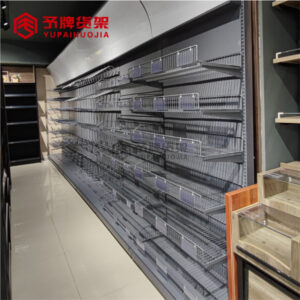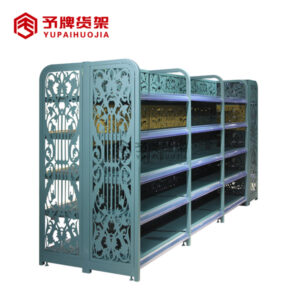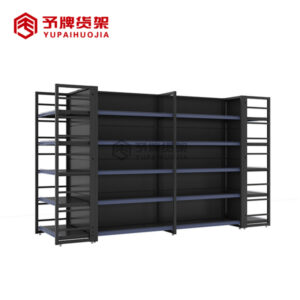The supermarket shelves have changed in recent years, you might not even notice that at first glance. The World Wide Web has made it easier for people to do their grocery shopping online, and this fact has led to changes in the design of supermarket aisles.
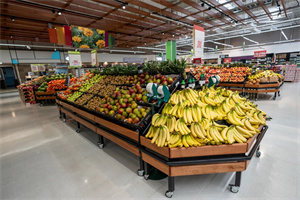
What is a supermarket shelves?
A supermarket shelf is a type of shelving used in grocery stores and supermarkets to store and display products. Supermarket shelves are typically made from metal or glass, and are available in a variety of sizes and configurations.
In recent years, the functionality of supermarket shelves has changed dramatically. advances in technology have led to the development of new types of shelves that are more efficient and easier to use. For example, some shelves now come equipped with sensors that automatically adjust the height of the shelf based on the weight of the products on it. This ensures that products are always displayed at an optimal height, making them more likely to be seen and purchased by customers.
Other new features include LED lighting, which can help to highlight products and make them more visible, and RFID tags, which can track inventory levels and help store employees restock shelves more efficiently. As technology continues to evolve, it is likely that supermarket shelves will become even more sophisticated and user-friendly.
How have shelves changed in recent years?
Shelves are an important part of any supermarket, as they provide a space for products to be displayed and easily accessed by customers. In recent years, there have been some changes to the way shelves are designed and used in supermarkets.
One change is that shelves are now often made from materials that are more durable and easy to clean. This is because customers are increasingly interested in buying products that have been stored in a clean environment.
Another change is that shelves are now often designed to be adjustable. This allows supermarkets to change the layout of their shelves quickly and easily, depending on the products they want to display at any given time.
Finally, supermarket shelves are now often equipped with technology that allows them to interact with customers. For example, many shelves now have built-in sensors that can provide information about the products on them to customers via their smartphone or other devices.
-
 Steel stationery shop display rack for sale
Steel stationery shop display rack for sale -
 Supermarket shelves for sale in dubai
Supermarket shelves for sale in dubai -
 Pharmacy grocery display for sale
Pharmacy grocery display for sale -
 Cosmetic display shelves for shop
Cosmetic display shelves for shop -
 wholesale cosmetic display rack
wholesale cosmetic display rack -
 Supermarket Cosmetics shelves supplier
Supermarket Cosmetics shelves supplier -
 kitchenware store shelves for sale
kitchenware store shelves for sale -
 Adjustable Steel Modern Shelf Steel Shelves Grocery Shelf Mini Store
Adjustable Steel Modern Shelf Steel Shelves Grocery Shelf Mini Store -
 4 post retail shop racking display grocery item display rack supermarket shelf gondola
4 post retail shop racking display grocery item display rack supermarket shelf gondola
Why have supermarket shelves changed?
In recent years, supermarket shelves have changed considerably in terms of functionality. In the past, supermarket shelves were designed primarily for storage and stability, with little thought given to ergonomics or customer convenience. Today, however, supermarket shelves are designed with both of these factors in mind.
One of the biggest changes to supermarket shelves has been the introduction of angled shelves. These shelves make it easier for customers to see the products on the shelf and also make it easier for them to reach items at the back of the shelf. This is a major improvement over traditional flat shelves, which can be difficult to navigate and often require customers to stoop or stretch in order to reach items at the back.
Another change that has been made to supermarket shelves is the introduction of more robust construction. In the past, many supermarket shelves were made from flimsy materials that could easily be damaged or toppled over. Today, however, most supermarket shelves are made from much stronger materials such as steel or aluminum. This not only makes them more durable, but also helps to prevent items from falling off or becoming dislodged during use.
Finally, many supermarkets have also begun installing electronic shelf labels (ESLs). These labels provide real-time information on pricing and product availability, which can be extremely helpful for customers when making purchasing decisions. ESLs are typically much more accurate than traditional paper price tags, and they can save supermarkets a significant amount of money in labor costs associated with re-labeling
Who benefits from the changes in supermarket shelves?
In recent years, supermarket shelves have undergone a number of changes in order to improve their functionality. These changes have benefited both shoppers and retailers alike.
Shoppers have benefited from the changes in supermarket shelves in a number of ways. Firstly, the shelves are now much more spacious and easier to navigate. This makes it quicker and easier to find the items you need. Secondly, the shelves are now better lit, making it easier to see what products are available. Finally, many supermarkets now offer self-service checkouts, which can save time when shopping.
Retailers have also benefited from the changes in supermarket shelves. The additional space on the shelves has allowed them to stock more products, which can lead to increased sales. The improved lighting has made it easier for customers to spot new products, which can also boost sales. And finally, the self-service checkouts can free up staff time so that they can be used elsewhere in the store.
Conclusion
As you can see, the functionality of supermarket shelves has changed quite a bit in recent years. With the advent of new technologies and the ever-changing needs of consumers, supermarkets have had to adapt their shelving in order to stay ahead of the curve. However, one thing remains constant: supermarket shelves are still an essential part of the shopping experience, and we don’t see that changing anytime soon.


